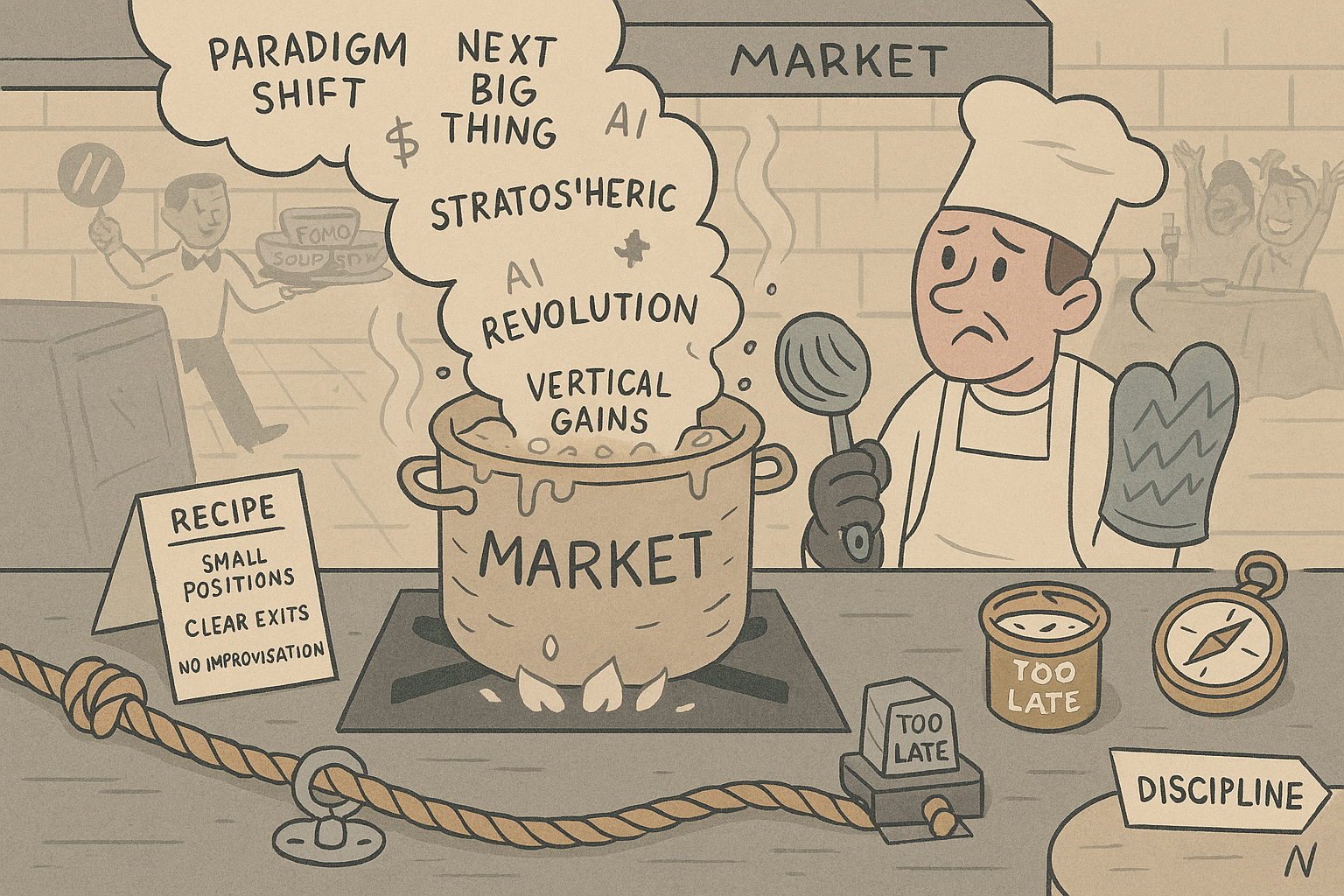The Market’s Boiling Pot: On Story, Signal, and Stillness
When narratives run hot, the question isn’t whether we’re in a bubble or a paradigm shift—it’s how to hold your posture without being swept away. | October 2025
There are moments in markets when everything feels like it’s running hot. Every headline is about the same handful of companies, every chart looks vertical, and every conversation circles back to the same buzzwords. You stand at the edge of the crowd and wonder: is this the new normal, or just the same old fever dressed in new clothes?
Since July, I’ve been waiting on the fence. Back then, it already felt too much. Now, months later, the temperature has only risen. The water is boiling, and the question is no longer whether it’s hot—it’s whether stepping in makes sense at all.
Here’s what I’ve come to see: the real decision isn’t about whether a stock is in “story mode” or “map mode.” Those are just labels, useful but incomplete. The deeper question is about attention. What kind of attention does this stock require, and how much of that attention is being pulled by noise rather than guided by signal?
Story mode, hot temperature This is the carnival. Prices swing on sentiment, not substance.
If you’re outside, stillness means waiting on the sidelines, rope tied to shore, refusing to be swept into the rollercoaster of emotions.
If you’re already inside and profitable, stillness means holding with discipline—protecting gains, not chasing more, and knowing when to step back.
Story mode, cool temperature The waters are calmer. The narrative is alive but not overheated.
Here, participation can be safer, because you’re not fighting the crowd’s frenzy.
Map mode These are the landscapes, not the storms.
They don’t demand daily vigilance, but they reward steady, periodic attention.
The trap is thinking you must decide whether we’re in a bubble or a paradigm shift. The truth is, you don’t need to know. You only need to know your posture. Are you anchored to fundamentals, or drifting with sentiment? Are you responding to signal, or reacting to noise?
And if it turns out this isn’t just a storm but a permanent climate shift? Then the healthy posture isn’t to stay in harbor forever. It’s to sail—but with smaller sails, clear maps, and the rope tied to shore. Participation, yes, but disciplined, tethered, and never at the mercy of the waves.
When the Noise Is Positive
There’s a phase in every hot market where the noise turns euphoric. Headlines glow, analyst upgrades pile up, social sentiment surges, and price action seems to confirm every belief. It’s tempting to treat this as signal—after all, everything is rising.
But here’s the paradox: positive noise is still noise. It can mask fragility, inflate conviction, and make it harder to distinguish real delivery from hype.
Experienced funds often fade the crowd at this point. They reduce exposure as sentiment peaks, test for divergence between narrative and fundamentals, and use the noise as liquidity—exiting into strength while others are buying. Some stay in, but hedge. They don’t confuse enthusiasm with durability.
If you’re already inside and profitable, this is the moment to be most careful. The rope tied to shore becomes even more important—not because the water is stormy, but because it’s deceptively warm. Stillness now means not adding, not chasing, and not assuming the crowd is right.
Markets will always invent new rules, but discipline doesn’t change. The rope tied to shore is still the rope tied to shore. Small positions, clear exits, no improvisation. The water may boil, but you don’t have to burn.
In the end, the question isn’t “Is this the new normal?” The question is: “What rhythm of attention keeps me clear, even when the market is boiling?”
